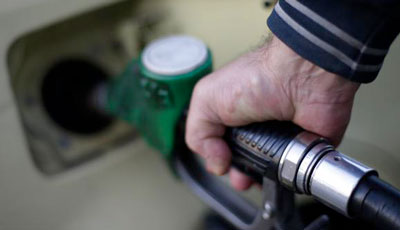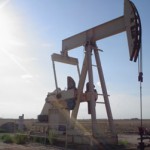Oil Price Paradox: Gasoline Could Be Even Cheaper

The price of gasoline is declining more slowly than oil, illustrating how consumers aren’t fully benefiting from falling commodities prices.
Typically, gas prices go up and down in tandem with crude oil, the main ingredient. But recently, oil prices have been falling much faster than gas prices. Drivers have paid at least $1 billion more for gasoline than they would have if the historical pattern had continued this year, according to government and industry statistics.
Regular gasoline prices have fallen more than 28% in the past year to an average of $2.18 for a gallon of regular unleaded. By comparison, Brent crude, the global benchmark for oil, has fallen more than 50% to about $50 a barrel.
Part of the reason is that companies that refine oil into gasoline are keeping more profits. This past week, three top refiners— Valero Energy Corp., Tesoro Corp. and Marathon Petroleum Corp.—collectively reported a jump in third-quarter earnings of $1.27 billion compared with a year earlier. At Exxon Mobil Corp., profit at its refineries doubled to $2.03 billion.
They are spending less for oil but haven’t passed along all the savings. The refiners said they strained this year to keep up with demand, as drivers took more road trips, spurred by lower gas prices and an improved economy. Several unplanned refinery outages, including one in California and another in the Midwest, crimped supply.
“The marketplace and market conditions, such as supply and demand, determine the price that consumers pay at the pump,” a Tesoro spokeswoman said.
The disparity shows how consumers aren’t fully benefiting from falling commodity prices. From tires to scones to cotton shirts, a range of products became more costly as wheat, fuel, corn and other raw materials soared in price before declining in the past year. Even Girl Scout cookies climbed 15% to $4 a box this year due to “the rising costs of raw ingredients and transportation,” according to the organization’s southern arm in Memphis, Tenn. But prices of many consumer goods haven’t fallen as fast as their ingredients.
“You’re seeing the ‘up-like-a-rocket, down-like-a-feather’ phenomenon in retail gasoline,” said James Sweeney, an economist at Stanford University who is on a California Energy Commission committee exploring gasoline price surges in that state.

When the price of crude and wholesale gas rises, prices at the pump typically shoot up after a few days. When prices are rising, consumers will drive 5 miles out of the way to save a few pennies on a gallon, so there are limits to how high retail profits can go, said the Association for Convenience and Fuel Retailing, a Virginia-based trade group that represents gas-station owners. Drivers are less fussy when prices go down, giving retailers leeway to regain profits.
From 2000 through 2014, gasoline sold for an average 95 cents over the price of a gallon of Brent crude, according to the Energy Information Administration. In the past 12 months, the gap climbed to about $1.16.
That is a difference of more than 20 cents on average. Multiplied by 135 billion gallons of gas sold in the past year in the U.S., that amounts to more than $25 billion.
“The gap is higher than it has been since the 1970s,” said Tom Kloza, global head of energy analysis for the Oil Price Information Service, a repository of fuel data. “There is no question: Gasoline should be cheaper.”
He and other analysts and fuel industry executives said higher prices in California, Chicago and elsewhere drove up the national average.
“Also, prices typically rise in the summer,” said Lynn Westfall, a longtime industry executive who now works for the EIA. That is because people drive more, and refiners must add expensive ingredients in the summer to ameliorate smog.
James Stock, an economist at Harvard University, estimates conservatively that since Aug. 15, drivers have paid between $1 billion and $2.5 billion more than they would have normally, even when anomalously high California prices are removed along with other extenuating factors. Mr. Stock measured the difference between wholesale and retail prices and factored in the price of ethanol, a plant-based renewable fuel added to most gasoline.
Drivers in much of the country appear generally unfazed, because they are paying relatively lower gasoline prices.
“Drivers are happy, so oil companies have a chance to keep more money without people noticing,” said Angie Diaz, as she parallel-parked her BMW 528i on the street outside a laundromat she manages in New York City’s Greenwich Village.
Driving regularly about 15 miles from her home in Queens, she said, her weekly gasoline bill has gone from about $65 to $44. “I’m on a budget, so it’s a big savings to me,” she said. “Prices seem so low; I had no idea they could be lower.”
Lower prices helped spur Americans this year to drive a record 2.09 trillion miles during the first eight months of 2015, according to the Federal Highway Administration. Gasoline consumption rose 3% in that period. Refiners said they have been running their plants feverishly to keep up.
Valero said last week that its refining segment generated third-quarter operating income of $2.3 billion, up from $1.7 billion in the third quarter of 2014. On each barrel of oil, Valero reaped $14.38, up from $11.81 in the third quarter of 2014. In a statement, Chief Executive Joe Gorder cited “strong product margins and healthy demand” and predicted that demand would continue to be strong in the fourth quarter.
Tesoro posted a record 91% jump in earnings to $759 million. Margins on sales of refined products increased to $15.57 a barrel from $11.82 a year earlier. CEO Greg Goff cited “a favorable market environment and strong performance across all business segments.”
Marathon reported third-quarter earnings of $948 million, up from $672 million a year earlier. CEO Gary R. Heminger said lower fuel prices drove up demand.
Gasoline prices are expected to fall to $2.03 a gallon by year-end, EIA projects, as people drive less in the winter and some refineries reopen. But in a recent conference call, Valero anticipated more outages in early 2016, pointing to tighter supply.
The unusual confluence of factors has upended the conventional math of a gallon of gas. In December 2011, crude accounted for 80% of the cost of a gallon of gasoline, according to the EIA. Other factors are distribution and marketing costs, refining costs and taxes. Now, crude accounts for only 46% of the price of a gallon of gasoline. Since 2000, it has averaged 56%.
Rebecca Adler, a spokeswoman for the American Fuel and Petrochemical Manufacturers, a trade group, said gasoline and crude-oil markets correlate strongly with each other over the long term but over the short term they can operate independently.
“Each is governed by its own supply/demand balance with inventories being a key factor,” she said in an email, adding that the supply and price are also influenced by refinery shutdowns.
Source: WSJ – Oil Price Paradox: Gasoline Could Be Even Cheaper




























